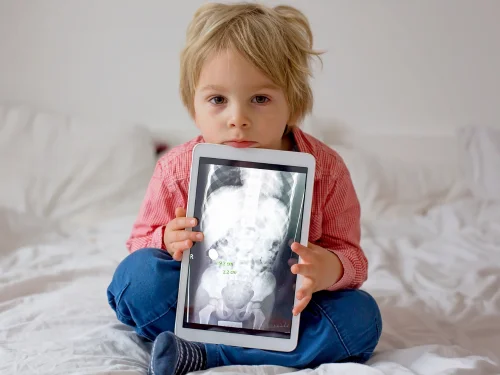Child Swallowed a Penny: What Parents Should Do

Yes—finger plays, clapping games, and dance routines that use hand gestures all help. Combine rhythm and repetition for deeper learning.
Send home simple activity ideas, kits, or worksheets. Offer short instructions and encourage family involvement. Regular practice builds lasting progress.
Try origami, sticker scenes, stringing pasta, or painting with Q-tips. Crafts that use small pieces build precision and control.
Young children are curious explorers. Shiny coins look like treasures, and little ones often test objects by putting them in their mouths. Because pennies and other coins are small and round, they are one of the most common things kids accidentally swallow.
First Things First: Is It an Emergency?
.webp)
If your child swallows a penny, the first step is to stay calm and check for choking.
- 🚨 Call emergency services immediately if your child is struggling to breathe, turning blue, or cannot speak or cry.
- If your child is drooling, vomiting, coughing, or complaining of chest or neck pain, go to the emergency room right away. These may be signs the coin is stuck in the esophagus (the food pipe).
What Usually Happens When a Penny Is Swallowed

The good news: most swallowed coins pass safely through the stomach and intestines and come out in the stool within a few days to two weeks. In fact, doctors report that 8 out of 10 cases resolve without surgery.
However, not all situations are safe.
- Large coins (like quarters) are more likely to get stuck.
- Children under age 5 have smaller airways and food pipes, so blockages are more common.
- Pennies made after 1982 contain zinc, which can corrode if they sit too long in the stomach, sometimes causing irritation or ulcers.
Symptoms Parents Should Watch For
.webp)
Seek medical care immediately if your child shows:
- Trouble breathing or swallowing
- Excessive drooling
- Constant gagging or vomiting
- Chest, neck, or stomach pain
- Refusal to eat or drink
- Bloody or dark stools
What Doctors May Do
.webp)
- X-ray: Confirms the object is a coin and shows where it is. This step is important because button batteries look similar to coins on X-rays but are far more dangerous.
- Observation: If the coin is in the stomach and your child has no symptoms, doctors may recommend waiting and checking the stool until it passes.
- Endoscopy: If the coin is stuck in the esophagus or causing severe symptoms, a doctor may perform a safe procedure using a small tube and camera to remove it.
What Parents Should (and Shouldn’t) Do at Home
.webp)
✅ Do:
- Call your child’s doctor for guidance.
- Keep your child hydrated and on their normal diet (if swallowing is normal).
- Watch bowel movements for the coin.
❌ Don’t:
- Induce vomiting or give laxatives.
- Delay care if your child shows concerning symptoms.
- Assume it’s safe if you’re not sure whether the object was a coin—button batteries and magnets need immediate emergency care.
You May Also Like: How Often Should Children Take a Bath? Tips for Babies to Teens
How Long Does It Take to Pass?
Most coins that reach the stomach pass naturally within 48 hours to 2 weeks. If the coin hasn’t passed after 2–3 days, or your child develops new symptoms, call your doctor.
You May Also Like: When Do Kids Start Reading? Signs, Stages, and How Parents Can Help
Prevention Tips for Parents
- Keep loose change in sealed jars or out-of-reach drawers.
- Get down to your child’s level and scan the floor for small objects.
- Teach the rule: “Only food goes in my mouth.”
- Be extra cautious during holidays when coins, batteries, and small toys are common around the home.
You May Also Like: Top 10 Kid Coordination Drills: Fun, Effective Ways to Build Motor Skills




